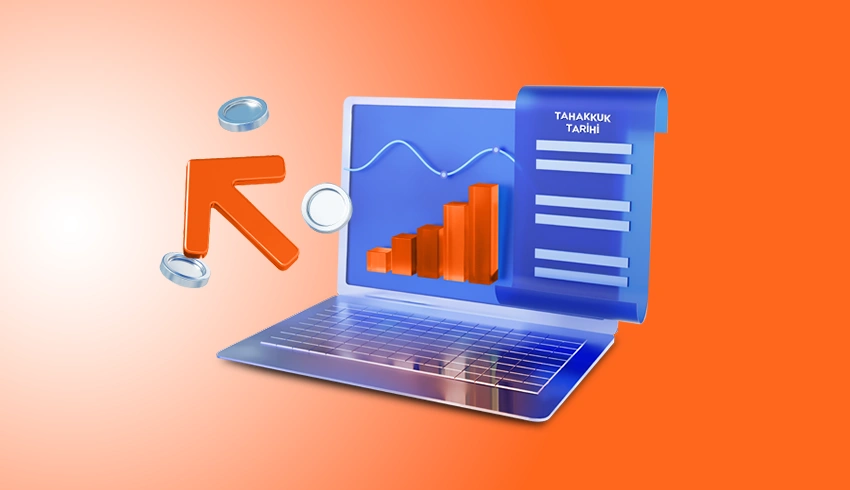In today’s business environment, simply making sales isn’t enough to keep cash flow healthy. Timely post-sale collections are a critical metric for ensuring your financial budget can actually operate as planned.
That’s where the risk score comes in. Far more than just a number, it acts like a crystal ball for forecasting future payment behavior. When you analyze your risk score correctly, it can pull your company out of unseen quicksand and make your collections process far more predictable.
What Is a Risk Score?
A risk score is a numerical metric used in credit evaluation to express an individual’s or organization’s likelihood of meeting financial obligations. It serves as a core decision-making tool for financial institutions, B2B sellers, and any entity managing receivables. By leveraging the risk score, potential payment delays can be detected early, enabling collection strategies to be tailored accordingly. Far more than a simple assessment, it becomes a pivotal control point at the heart of your collections dynamics.
How Is a Risk Score Calculated?
The risk-scoring process is an algorithmic evaluation that leverages both quantitative and qualitative data. The following criteria are most influential:
- Past Payment Performance: Timeliness of invoice payments and adherence to payment terms.
- Current Balance Level: Customer’s total outstanding debt and consistency of indebtedness over time.
- Credit Limit Breaches: Frequency and severity with which assigned credit limits are exceeded.
- Industry Risk: The sensitivity of the customer’s sector to broader economic conditions.
- Financial Ratios: Key metrics such as equity structure, return on assets, liquidity ratios, and debt-turnover rates.
These inputs are analyzed via AI-driven models or conventional scoring algorithms. Many organizations continuously update their risk scores to produce increasingly accurate forecasts.
Integration of Receivables Policies with Risk Scores
When corporate receivables policies are integrated with risk‐score data, companies can intervene early with high‐risk customers. This integration allows you to develop flexible, customer‐specific strategies instead of relying on “one‐size‐fits‐all” approaches.
- Payment terms can be tailored according to each customer’s risk profile.
- Conditions such as collateral requirements, down-payment amounts, and number of installments can be customized.
- Automated intervention scenarios can be triggered for high-risk segments.
Customer Segmentation by Risk Score
By embedding risk scoring into your collections process, you can achieve up to 30% more efficient cash-flow management. Segmenting customers into tiers—A, B, C, and D—based on their risk levels provides the strategic foundation for targeted planning and optimized receivables management.
Segment A (Low Risk): Customers in this tier may continue under standard payment terms and conditions. You can implement reward strategies—such as loyalty programs—to further incentivize timely payments.
Segment B (Medium Risk): Apply restricted credit limits and institute closer, more frequent account monitoring.
Segments C–D (High Risk): Require an upfront down payment, increase the frequency of monitoring activities, and enable automated alert systems for immediate intervention.
Leverage Finrota’s solutions to gain precise visibility into your collections and expense balances, taking full control of your cash flow. By detecting high-risk customer behaviors at an early stage, you can deploy strategic measures without delay and empower your team with financial insight. Equipped with Finrota’s multi-layered AI support, teams execute receivables management with greater consistency, speed, and accuracy.
Automating Accounts Receivable Collections
Manual follow-up in collections not only consumes valuable time but also heightens the risk of human error. An automated collections system integrated with risk-score data:
- Sends automatic reminders to high-risk customers
- Prioritizes collection efforts by risk level and optimizes intervention timing
- Integrates with CRM and ERP platforms for real-time data flow
Customer Analysis Based on Payment Habits
Not every customer behaves the same way—some pay before their due date, while others vanish once the deadline passes. For this reason, it’s essential to conduct segment-based analyses of customer payment habits. The following evaluations are critical:
- Overdue Frequency & Day-by-Day Analysis: Track how often invoices go past due and analyze delays on a daily basis.
- Average Days Late & Variance Metrics: Calculate the mean delay in days and measure dispersion to understand consistency.
- Period-Over-Period Payment Behavior: Monitor changes in payment patterns on a monthly or quarterly basis.
These insights are invaluable both for crafting targeted collection strategies and for personalizing the customer experience.



